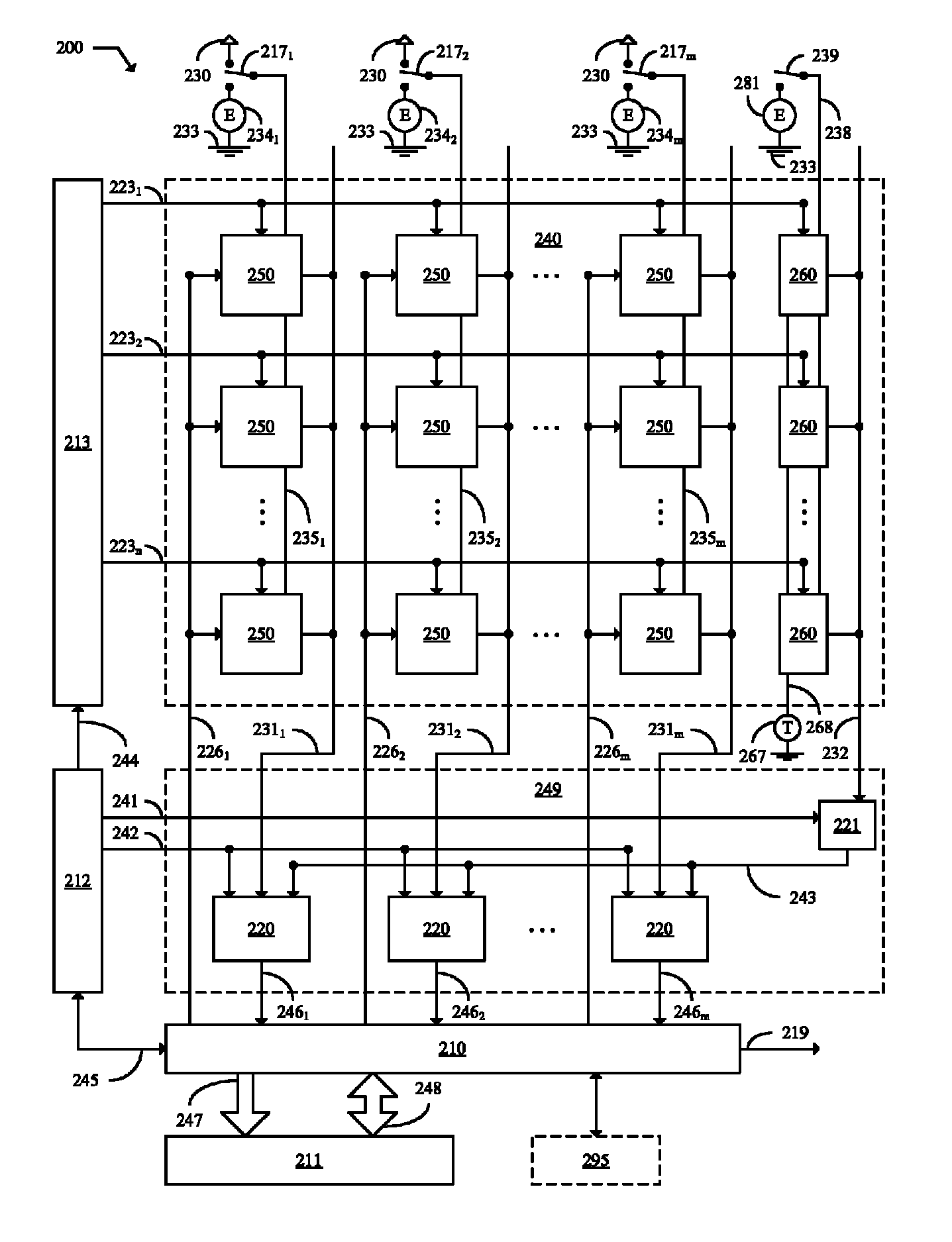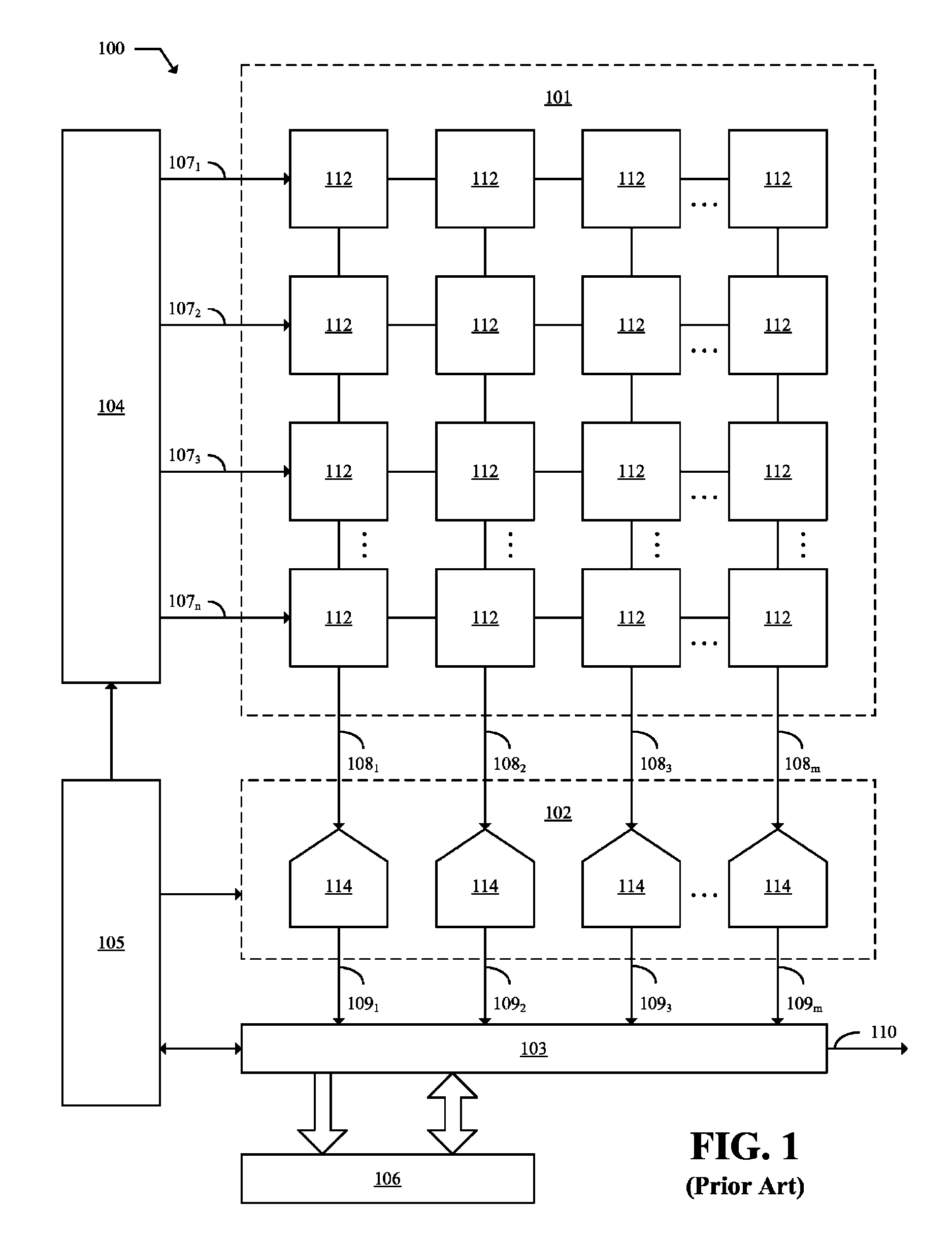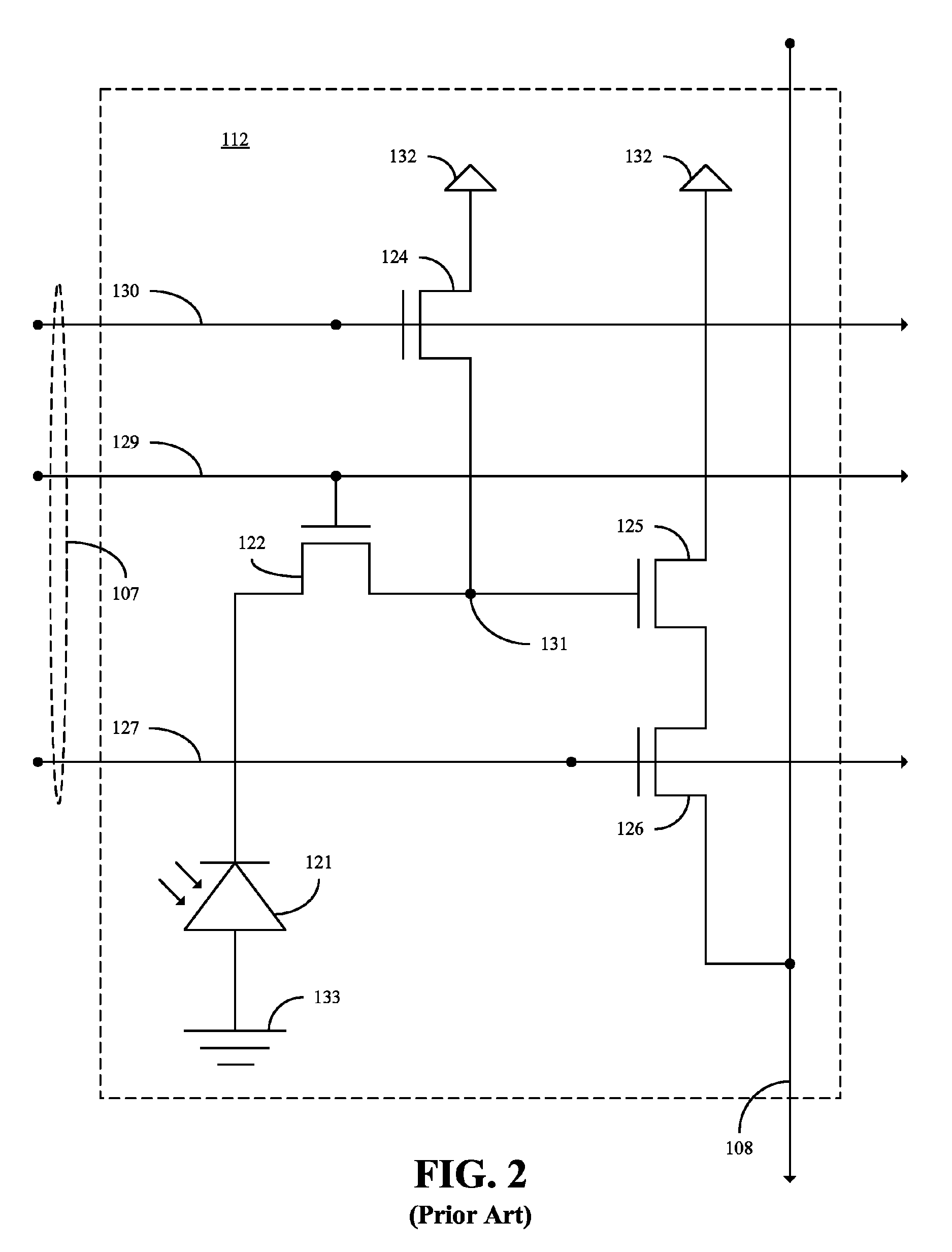Circuits and methods allowing for pixel array exposure pattern control
a pixel array and exposure pattern technology, applied in the field of image processing systems, image sensor circuits, pixel circuits, image processing methods, etc., can solve the problems of inability to see objects in the bright areas of images, accumulating too much charge or accumulating too little charge as described above, and unable to see objects in the dark areas. , to achieve the effect of reducing the risk of pixel circuit failure, reducing the risk of pixel failure, and reducing the effect o
- Summary
- Abstract
- Description
- Claims
- Application Information
AI Technical Summary
Benefits of technology
Problems solved by technology
Method used
Image
Examples
Embodiment Construction
[0073]FIG. 5 illustrates a block diagram of an image processing system 700 in accordance with an embodiment of the present invention. The image processing system 700 includes an image sensor circuit 200 and a processor 800. The image sensor circuit 200 includes a pixel array 240 and one or more circuits 290. In various embodiments, the image sensor circuit 200 and the processor 800 are both located on a single chip. In various embodiments, the image sensor circuit 200 allows for capturing images of physical scenes, and the processor 800 is configured to process the images captured by the image sensor circuit 200. In some embodiments, the processor 800 is configured to receive data for an image from the image sensor circuit 200 and is configured to processes the data to detect one or more objects in the image. In various embodiments, the image processing system 700 may be used for machine vision or other automated pattern recognition applications. In some embodiments, the image proce...
PUM
 Login to View More
Login to View More Abstract
Description
Claims
Application Information
 Login to View More
Login to View More - R&D
- Intellectual Property
- Life Sciences
- Materials
- Tech Scout
- Unparalleled Data Quality
- Higher Quality Content
- 60% Fewer Hallucinations
Browse by: Latest US Patents, China's latest patents, Technical Efficacy Thesaurus, Application Domain, Technology Topic, Popular Technical Reports.
© 2025 PatSnap. All rights reserved.Legal|Privacy policy|Modern Slavery Act Transparency Statement|Sitemap|About US| Contact US: help@patsnap.com



